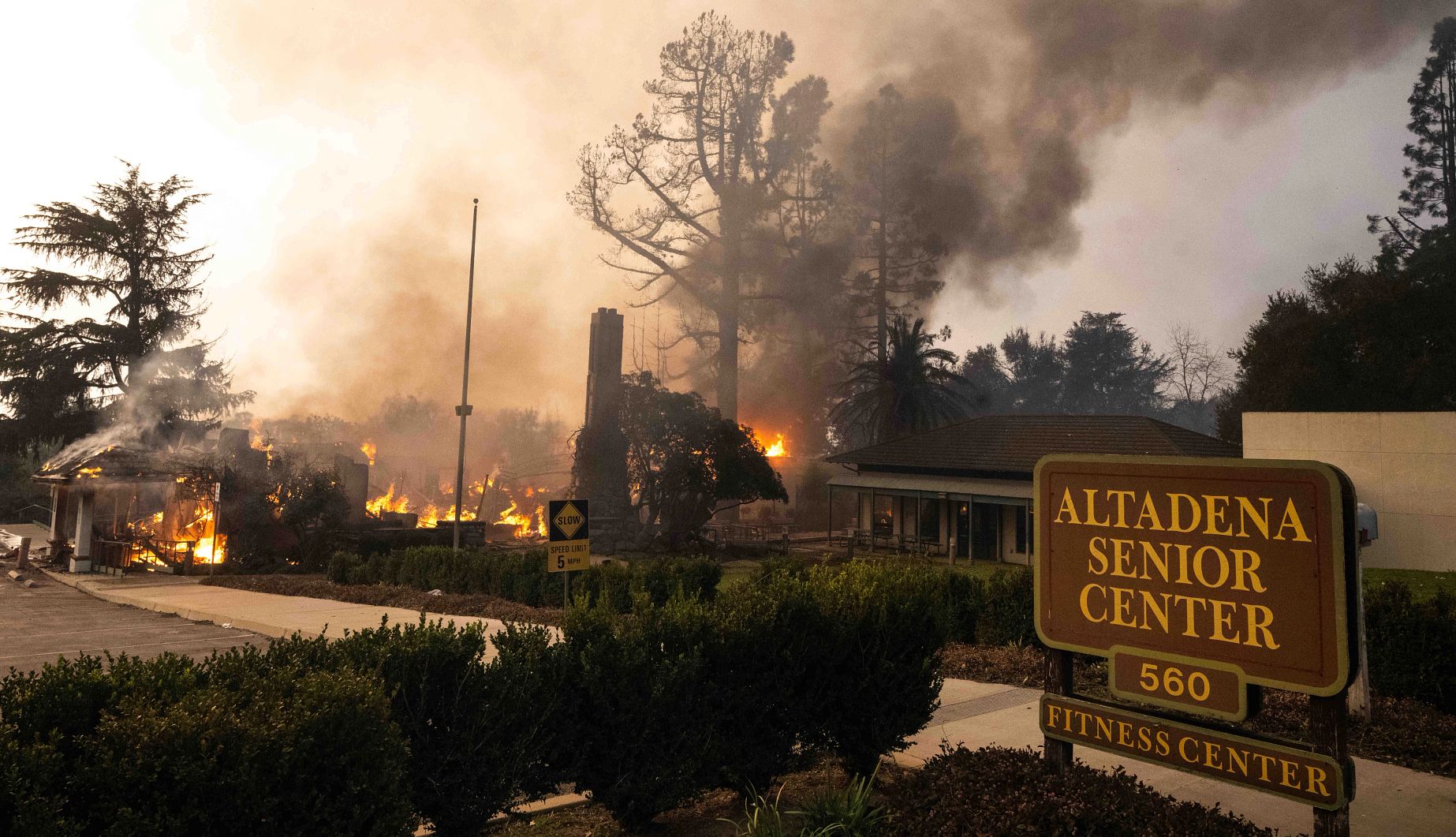AARP Hearing Center
Running from a wildfire is a terrifying ordeal for anyone. But there’s added fear for those who have limited mobility, rely on medical equipment or suffer from dementia and struggle to comprehend what is happening.
That’s been the reality for many of Southern California’s nursing home and assisted living residents recently as flames have torn through neighborhoods, forcing evacuation. More than a thousand residents from dozens of nursing homes and assisted living facilities were evacuated when the Eaton and Palisades fires erupted two weeks ago. The Hughes Fire, which broke out Wednesday prompting evacuation orders and warnings for more than 50,000 people across Los Angeles and Ventura counties, could see more residents uprooted from their homes.
Evacuating these vulnerable, high-needs residents is a complex and precarious operation. Family members may be unsure of how to find their loved one or what to do to support them in a disaster situation. We’ve gathered advice from disaster response and long-term care experts on five topics to help family caregivers navigate these situations.
1. Finding loved ones
All nursing homes are required by federal law to have an emergency preparedness and evacuation plan for disasters. For assisted living facilities, which are regulated by state laws, this requirement varies from state to state. In California, assisted living facilities must have a plan.
The plans should include an emergency contact responsible for notifying a resident’s designated family member or representative of that resident’s whereabouts if evacuated, plus other important information.
“That’s what should happen,” says Sue Anne Bell, an assistant professor at the University of Michigan School of Nursing, who researches disaster preparedness and response, “but evacuations are often really chaotic, and as much as we want them to be smooth and straightforward, that may not be what actually happens.”
If you haven’t been contacted, try calling your loved one’s facility. Even if the facility is unable to answer, a pre-recorded message may be set up to provide updates or an alternate point of contact. A facility’s website or social media channels (including Facebook or X) may also disseminate up-to-date information.
You can also look to government agencies. While each state varies in how they run a disaster response, many task the regulatory bodies of long-term care facilities with coordinated communication.
In the case of the current Southern California wildfires, the California Department of Health has posted on its website a list of nursing homes that have been evacuated and relocation sites. If a relocation site is listed as “unknown” or you need more information, contact the district office that oversees the facility.
For assisted living, the California Department of Social Services has a list of those facilities that have been evacuated and relocation sites. If you need more information, contact the regional office that oversees the facility.







































































More From AARP
Portraits From the L.A. Wildfires: Older Adults Face Loss, but Still Find Hope
Meet those whose homes, retirement dreams and keepsakes have gone up in smoke
Make Sure Your Donations to Wildfire Victims Aren't Going to Scammers
Criminals try to profit from the region’s pain in different ways — including through fake charities